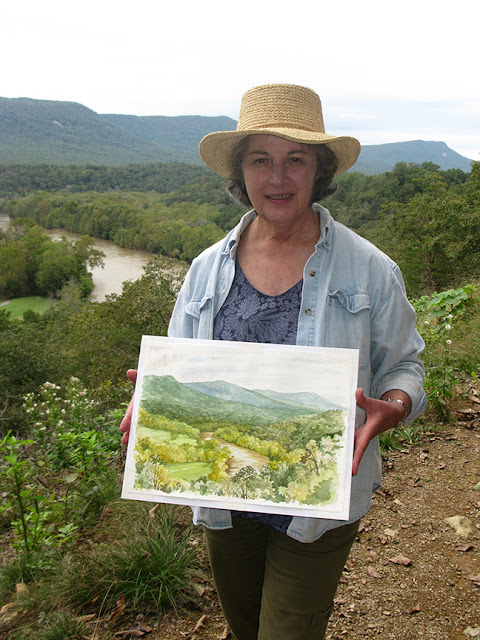 |
| Step 1 - Pencil drawing |
Four years ago I planted a tiny Carolina Silverbell Tree (Halesia carolina) in my yard so that I could enjoy and paint this lovely native tree. It was so exciting to see it bloom for the first time this spring! But the flowers opened during such a rainy week that all I was able to do was take photos of it. About a week ago I finally started working on my painting.
The first step is always a pencil drawing--working from a set of my photos, I chose part of a branch that showed an array of blossoms at different stages of development, from buds barely open to spent blossoms whose petals have fallen, leaving behind the fertilized style on the stem.
Once I have a shaded drawing, I trace it, rearranging parts of the composition to show another branch with leaves unfurled. At this point, I went out to my garden to look at the tree once more, and noticed that it had developed the characteristic four-sided seed pods (it's alternate botanical name is
Halesia tretraptera)... hmmm, it would be interesting to add some of these seed pods to the painting. I took some more photos and added a few seed pods to the left side of the branch, along with a few more mature leaves, to show the seasonal progression.
 |
| Step 2 - Refine the composition |
I then re-traced my drawing to begin the final line drawing in ink. At this stage I did further refinements to the composition, moving the lower right hand branch a bit. Looking at my drawing, it seemed to me that my photo had led me to enlarged the branch too much--the flowers were about twice life size. It would look better if scaled down a bit, so I went to our local copier shop and had them run a copy at 95% the original size.
The line drawing was now ready for tracing onto the watercolor paper. A half sheet of watercolor paper was about the right size, and, as usual, I use my studio window as the "light table" for tracing.
 |
| Step 3 - Line drawing in ink |
After tracing the drawing onto the watercolor paper, I again corrected the drawing, referring back to my photos to refine the edges and shapes of the flowers and leaves. I had selected a palette of Cobalt Blue, Winsor Lemon and Permanent Rose for the primary colors. I mix all the other colors to be used in a painting from these three primaries for a harmonious blend of colors.
Now, I was ready to start painting. This is always the hardest part--where to begin? I chose the uppermost flowers, laying a very light wash of pink over some of the petals to bring out the shape of the flowers. I go do something else for a while until the wash dries completely, usually a walk around the garden. Another light wash of lavender for the shadows of the inner petals creates more depth and definition, then I wait again. Then to lay down some color for the trunk and branches, and a wash of green on some of the leaves.
 |
| Step 4 - Laying down washes. |
It's hard to restrain myself and wait for adequate drying time, so sometimes I work on other parts of the painting, being very careful not to get close to the wet areas--a risky process. Sometimes I cover parts of the painting with tracing paper to protect it from spills. After the initial washes are completely dry, I lay more washes of color to add a sense of depth to the flowers, petioles and leaves.
 |
| Step 5 - Modeling the flowers and leaves. |
Gradually, as more elements and details are brought in, the painting starts to emerge. More layers of washes go on other flowers and leaves, deepening the color and defining the edges. Then adding the green seedpods on the left...
 |
| Step 5 - Adding more leaves and seed pods. |
This is as far as I've got with the painting for the moment. At this time I'll probably wait for the seed pods on the tree to ripen more so that the last seed pod on the left below the others can be shown at its mature or dried stage--I expect this won't happen until around the end of the summer or early fall. In the meantime, I'll start working on other paintings--I usually have at least one or two paintings in the pipeline.














































